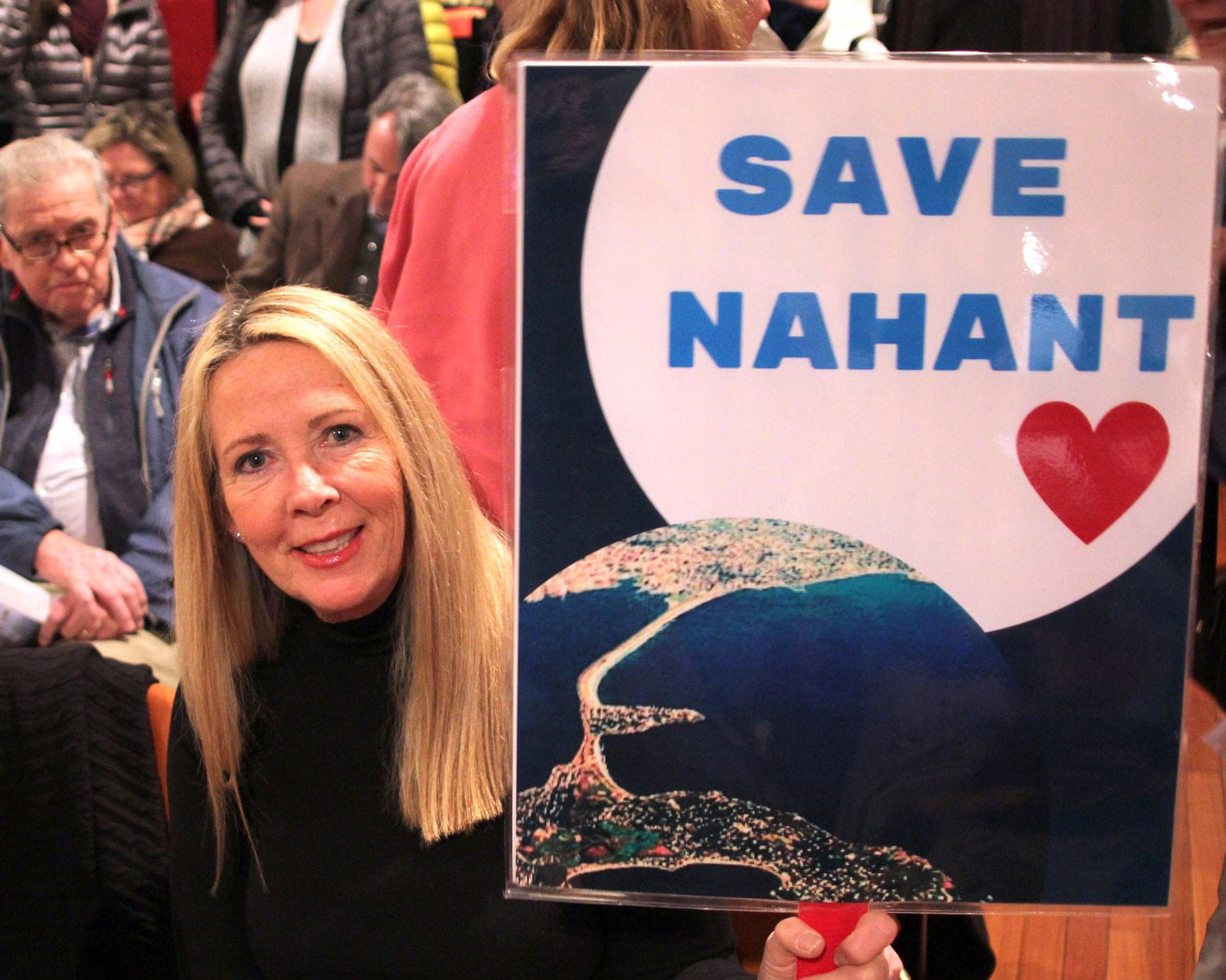NAHANT — The smallest town in the state took a big stance on plans to expand a college campus on East Point.
Northeastern University’s Marine Science Center presented the town with a brief presentation on its proposal to construct an additional building on a 23-acre site for research and classroom space on Thursday night. Immediately afterwards, before residents formed a line that wrapped around the auditorium to speak publicly, the Board of Selectmen voted unanimously to petition land court for an injunction to stop the development.
“I firmly believe this is not a good thing for the town,” said chairman Enzo Barile.
The proposed new building would be on the east edge of the Murphy Bunker, and use some of the bunker’s existing footprint to minimize the square footage that touches the ground to about 15,000 square feet, said architect Bob Schaeffner.
Crowds of people, who poured into the hallway and sat on the floor and in the balcony when more than 100 chairs filled up, booed when they saw the conceptual drawing of what was being proposed. Many waved homemade signs that read “Save Nahant.”
“We’re the smallest town in the commonwealth,” said Justin Mahoney. “It all comes back to that.”
Vi Patek, director of Nahant Safer Waters in Massachusetts, said the organization has always worked closely with the university and considered it a sister organization.
“It’s probably time to talk about relationships,” said Patek. “In all relationships — marriages, friendships — there are times when things go wrong. It’s easy to be angry and to just say no. I think we need to try to keep them. We can’t keep them if we fight them off with fire.”
She requested a year to deliberate, research, and learn about the proposal before starting the process over in 2019.
Various concerns were raised, ranging from a vibrant bird population, the possibility of Native American ancestral remains on the site, and the detrimental effects it could have on the surrounding land and waters.
Geoff Trussell, director of the Marine Science Center, said he was shocked and somewhat saddened to have caused the reaction he did from the town. He said the university needs to work much harder at being a good neighbor.
But at the other end of the causeway, the proposal is getting a different reception.
“If Nahant doesn’t want them, Lynn will take them,” said James Cowdell, executive director of Economic Development and Industrial Corporation of Lynn in a phone interview. “The city of Lynn — as far as from an economic development perspective — we want them in Lynn.”
Cowdell said he met with representatives from the school on Wednesday to propose two sites — a property with a commercial pier owned by EDIC, and another near the commuter ferry pier, he said.
“Both of these sites are comparable,” said Cowdell. “I rolled out the red carpet saying that Lynn is open for business.”
Lynn City Councilor Peter Capano spoke about the idea at the meeting, noting the waterfront in Lynn is already zoned properly for the use.
The idea was well-received by the Nahant residents. Lauren Sherlock said she has always been proud to have the school in town.
“I have two children at the Johnson School who benefit greatly from the relationship they have with Northeastern University,” said Sherlock.
But while the university is remaining open to other options, she said the Lynn proposal sounded like a wonderful opportunity for the city, which has a commuter rail and could potentially shuttle students to the Marine Science Center.
When asked by The Item whether moving to Lynn was something the university was considering, Trussell declined to comment.
“All I can say is I heard the comments loud and clear,” he said. “I would not comment on the record about the Lynn proposal.”
A separate project to dramatically increase seawater intake for research was also discussed at length. The university withdrew its proposal for the project earlier this month after it was met with strong opposition from residents and fishermen, but plans to submit a new plan after talking with residents mid-March.
The proposed intake project would have led to an almost five-fold increase in the amount of water collected. The existing system isn’t enough to support the center’s work, said Trussell.
As part of the plan, a new, 2,400-square-foot pump house would be constructed at the south end of the laboratory. The pump house would be in the basement level, making it safer and more efficient. Seawater would be pumped to the existing storage tanks, and new distribution lines would be installed. The ground level would serve as a boathouse for three research vessels.

